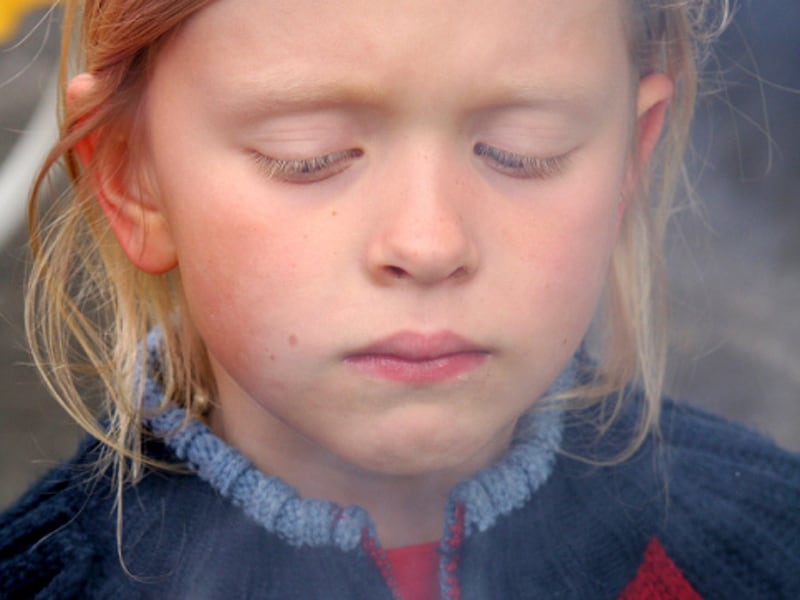Two thirds of parents smoked at least the same amount if not more during the COVID-19 pandemic, leaving children forced to stay at home due to school closures at increased risk of second- and thirdhand smoke exposure, suggests UK research.
Cara Bossley, consultant in paediatric respiratory medicine, King’s College Hospital, London, and colleagues interviewed 50 parents or carers who had previously attended a smoking cessation programme.
Around a third of parents smoked as much during lockdown as before, while another third smoked more, leaving an average of 2.5 children per household exposed to parental smoke.
Dr Bossley said there were a “variety of reasons for increased smoking, but mainly anxiety, depression, and uncertainty” were cited as reasons.
Consequently, the national lockdown “increased children’s secondhand and thirdhand smoke exposure in families that smoke”.
Previously children would have “spent much more time at school and outside”, Dr Bossley said, while family members “who used to smoke at their workplace were now smoking at home”.
The research was presented at the European Respiratory Society (ERS) International Congress 2021 on September 6, and recently published in The Lancet Respiratory Medicine.
Pandemic Effect
Jonathan Grigg is professor of paediatric respiratory and environmental medicine at Queen Mary University of London, and chair of the European Respiratory Society Tobacco Control Committee.
He told Medscape News UK that there was “initial feeling that people might give up smoking” during the pandemic because “they would be more concerned about lung health” and the reduction in social smoking.
“On the other hand, clearly [the pandemic] was an enormous stress and most of the focus was on COVID and…there was no real effort to use” the pandemic as an opportunity to promote general lung health.
Prof Grigg continued that the current data are consequently “important” and emphasise that “we still have a big issue with smoking and we need still to have significant investment in smoking cessation services”.
He noted, however, that smoking cessation services have been “significantly reduced” over the past decade and the current study is also a “timely reminder” that smoke exposure for children “remains an issue as well”.
Nevertheless, the impact on children from increased smoke exposure identified in the study is more by inference than direct measures.
Prof Grigg said that “we don’t know” the exact degree of exposure the children experienced, and there were no measures of urinary markers.
But if there is smoking at home, “whether it’s indoors or just standing inside the door, that means the exposure will be increasing”.
Secondhand Smoke
Dr Bossley began her presentation by underlining that passive smoke exposure is “harmful to children”, increasing the risk of respiratory infection, cough, preschool wheeze, and asthma, and is especially harmful when they already have respiratory diseases.
Moreover, children inhale “double the amount of dust compared to adults”, meaning they inhale more smoke containing dust particles. They also have “faster respiratory rates and narrower airways”, further increasing the risks.
Dr Bossley also noted that thirdhand smoke, or the accumulation of harmful toxins or persistent residue from secondhand smoke, is harmful, as it can be re-emitted into the air, becoming increasingly toxic over time.
The closure of school and after-school clubs in the wake of the COVID-19 pandemic led to children spending more time at home, potentially increasing their risk of exposure to passive smoke from parents also obliged to stay home.
To determine how smoking habits changed during the pandemic, the team contacted parents who were smokers and had previously taken part in their motivational smoking cessation programme with their respiratory clinical nurse specialist (CNS).
The respiratory CNS administered a questionnaire via telephone to 50 parents and carers in January and February 2021, asking about their home environment, number and age of children, smoking habits and how these changed during the lockdown.
Ninety percent of respondents smoked prior to lockdown, while another 8% vaped, the results indicated, with only one household smoke-free.
During lockdown, 34% of respondents smoked less than they had before, with the remaining 66% saying they smoked the same amount (34%) or more than before (32%).
Among the parents, 34% were vaping as well as smoking during lockdown.
The team found that, on average, 2.5 children per household were exposed to environmental tobacco smoke. More than one family member smoked in 29% of smoking households, while in 6% of smoking households the child was required to shield during lockdown due to a respiratory condition.
The households scored an average of seven out of ten on a hardship scale, with many citing stress at home due to looking after children and home schooling, not being able to work, loss of job security, being bored and escalation of prior anxiety and depression during the pandemic.
Dr Bossley said, in response to the findings, educational efforts on the harmful effects of second- and thirdhand smoke exposure need to be improved, along with the provision of “virtual smoking cessation clinics”.
No funding declared.
No relevant financial relationships declared.
European Respiratory Society International Congress 2021: Abstract 2579. Presented 5 September

